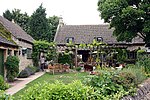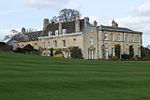Clipsham Old Quarry and Pickworth Great Wood

Clipsham Old Quarry and Pickworth Great Wood is a 111.2-hectare (275-acre) biological and geological Site of Special Scientific Interest in Rutland. It lies southeast of Clipsham and north of Pickworth. Clipsham Old Quarry is a Geological Conservation Review site, and Pickworth Great Wood is owned by the Forestry Commission.Pickworth Great Wood is one of the largest deciduous woods in the county, with diverse breeding birds and over 150 species of moth. Clipsham Old Quarry has dense hawthorn scrub and limestone grassland with a variety of lime-loving herbs such as dwarf thistle and yellow-wort. The quarry exposes rocks of the Bajocian Middle and Upper Lincolnshire Limestone around 170 million years ago.There is public access to Pickworth Great Wood, but not to Clipsham Old Quarry.
Excerpt from the Wikipedia article Clipsham Old Quarry and Pickworth Great Wood (License: CC BY-SA 3.0, Authors, Images).Clipsham Old Quarry and Pickworth Great Wood
Geographical coordinates (GPS) Address Nearby Places Show on map
Geographical coordinates (GPS)
| Latitude | Longitude |
|---|---|
| N 52.723 ° | E -0.549 ° |
Address
Lodge Farm
PE9 4DJ
England, United Kingdom
Open on Google Maps










